Volkswagen Passat US Test drive since 2011 sedan
"Passat" - the wind of change
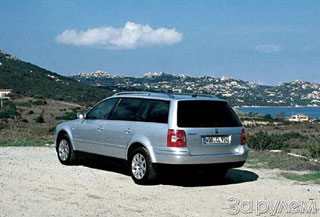 Parisian debutant - on the winding roads of Sardinia
Parisian debutant - on the winding roads of Sardinia Back in Moscow, looking at press releases, I was very puzzled by an abundance of all kinds of configuration options. Two types of bodies: sedan and station wagon. Five gasoline engines with a capacity of 102 to 195 liters. With. and three turbodiesels from 101 to 150 horses. Three variants of the gearbox are five- and six -speed mechanical and automatic. Add to this two types of drives - traditional front and full 4Motion on the most charged versions. What to give preference, which combination to choose when the time for dating is so limited? Just a head around, and in addition to the base, there are various options for individualizing the car: Comfort Line, Trend Line and High Line. In general, it will have to be forgotten about the beauty of Italy - it became obvious at home. And then, finally, in front of us is a dense line of new passats.
Who will you lead ...
The Passat was not only rounded and heavier. In his appearance, the solidity, respectability inherent in vehicles of a higher class clearly identified: chromium increased, new rear lights appeared, more powerful bumers and xenon headlights on expensive versions. When rushing for this venerable burgher
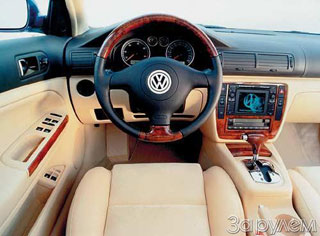 there is no longer an analogy with Skoda-Octavia, which we often compared with the Passat of 1996. The current down is looking at its predecessor and clearly gravitates to a more prestigious and expensive company. Apparently, having felt this and not wanting a direct comparison with Audi A6, the designers did not stint on the size of the Volkswagen emblem. The station wagon, or, as is customary in the company, the option also absorbed all the attributes of a large prestigious car. As befits a family vehicle, it looks even heavy than the sedan, but this is no less attractive.
there is no longer an analogy with Skoda-Octavia, which we often compared with the Passat of 1996. The current down is looking at its predecessor and clearly gravitates to a more prestigious and expensive company. Apparently, having felt this and not wanting a direct comparison with Audi A6, the designers did not stint on the size of the Volkswagen emblem. The station wagon, or, as is customary in the company, the option also absorbed all the attributes of a large prestigious car. As befits a family vehicle, it looks even heavy than the sedan, but this is no less attractive. Inside the changes are much less. Perhaps only a feeling of space, even an excess of free space and the high cost of decoration in the most prestigious versions inspire the feeling of something new and at the same time more solid. And in the old Passat, it was a sin to complain about ergonomics, and here - and the seats became more refined, and the ranges of their adjustment are more. But in fact, the interior remained the same, in any case, very similar. The same convenient controls, massive (and from this empty) front panel, the same deflector grilles and a combination of devices. In general, inside the new Passat is very solid.
Comfort or temperament?
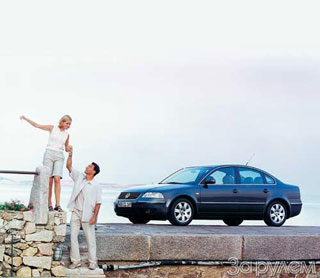 While colleagues fight for the right to be the first to grab on the most charged versions with V5 and V6 engines, I sit down in an option with an updated 1.9TDI turbodiesel - 130 liter. With. This motor is very modern and promising, it serves almost all Volkswagen - from golf to caravel and attracts not at all diesel temperament. So now he plays a heavy car from the spot, and under a barely audible whistle of the turbine we rush in pursuit of the newly starting V5. However, not only the cheerful body of the motor is impressed, where the improved comfort and energy intensity of pendants is more noticeable. I must say that the roads in these parts do not shine even, but the Passat swallows the local attractions easily, only small swaying the body and a strongly muffled tire tapping when traveling railway crossings and poorly fitted found on the asphalt are felt. Excellent!
While colleagues fight for the right to be the first to grab on the most charged versions with V5 and V6 engines, I sit down in an option with an updated 1.9TDI turbodiesel - 130 liter. With. This motor is very modern and promising, it serves almost all Volkswagen - from golf to caravel and attracts not at all diesel temperament. So now he plays a heavy car from the spot, and under a barely audible whistle of the turbine we rush in pursuit of the newly starting V5. However, not only the cheerful body of the motor is impressed, where the improved comfort and energy intensity of pendants is more noticeable. I must say that the roads in these parts do not shine even, but the Passat swallows the local attractions easily, only small swaying the body and a strongly muffled tire tapping when traveling railway crossings and poorly fitted found on the asphalt are felt. Excellent! However, the cooler the mountain serpentine, the more often you fuel the electronic accelerator pedal to the floor, often switch the gears and the sound of the motor becomes more tearful.
Of course, 130 liters. With. Not a ceiling for a car like a passat. But the matter is not in maximum power - just too great the difference in traction during the work of turbocharged and without it. It would seem that just on the tachometer there were 1,500 rpm and the car very willingly followed the accelerator, but as soon as the arrow fell to 1200 rpm - that's all, the car is frankly not going. In the mountains, it is felt especially acute. As a mockery in these conditions, you perceive the VI transmission in the box. I found this exclusively autobasped attribute to my shame, only having passed on the fifth of more than a dozen kilometers.
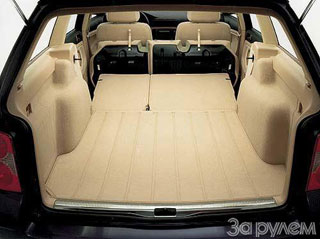 Another characteristic feature of the diesel engine is the response vibration of some control organs and a pressing rumble above 3500. You gradually get used to the itch of the box lever, but the noise presses on the ears at temperamental driving - it was still in vain that another increase in the gear was inserted.
Another characteristic feature of the diesel engine is the response vibration of some control organs and a pressing rumble above 3500. You gradually get used to the itch of the box lever, but the noise presses on the ears at temperamental driving - it was still in vain that another increase in the gear was inserted. Having said goodbye to a turbodiesel, I transplant into a two -liter sedan (in German sounds much more solid - a limousine) and ... I am very quickly disappointed. It is more difficult to move on it, the reaction of the car is slim, and the engine promotion is some kind of boring and spineless. I understand that compliance with the requirements is already Euro IV is a very serious matter, but ... if so, there is no more weak option 1.6 even a weaker option.
In comparison with the diesel engine, the noise in the salon of the gasoline version almost did not decrease. Its tonality has changed, there are fewer vibrations, but since you are twisting the engine all the time, after 4000 rpm it is heard very clearly. At first glance, the sedan’s move became even smoother, but the softness of the suspensions did not benefit: the vertical buildup of the body is excessive on the gentle waves. If the station wagon, having worked out unevenness, is immediately stabilized, then the limousine manages to swing several times.
To clarify the impressions, I transplant into a 2.3-liter V5. One hundred and seventy horses under the hood of the sedan do not change the nature of the pendants - they are the same, slightly relaxed. Interesting, but a powerful engine almost does not affect the behavior of the car. No, he, of course, is much more lively than two -liter, but at the same time retains some lethargy of responses even with very sharp presses on the accelerator. Subconsciously from an energy -angled car you expect something like that - but no, all the same
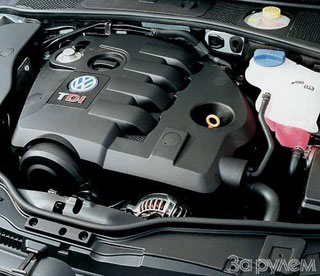 to boredom even acceleration, nothing supernatural. In search of the severity of sensations, I finally force me to awaken the electronic system of exchange rate stability (ESP), designed to intelligently fight with emerging slides. Under her caring chatter, the back axis was immediately extinguished. In general, in terms of controllability, the new Passat is expected to be reliable, convenient and comfortable. Calm, but accurate and understandable reactions of the machine, very moderate rolls allow you to control it without tension in any road conditions. Perhaps, in comparison with the previous version, the new Passat became even more phlegmatic in responses and, alas, less interesting for an amateur to grab with a breeze. There was a certain distance between the driver and the car, interfering with mutual understanding. The Passat makes it clear: riding on the verge is not his element, so it is better not to bring the matter to extreme situations.
to boredom even acceleration, nothing supernatural. In search of the severity of sensations, I finally force me to awaken the electronic system of exchange rate stability (ESP), designed to intelligently fight with emerging slides. Under her caring chatter, the back axis was immediately extinguished. In general, in terms of controllability, the new Passat is expected to be reliable, convenient and comfortable. Calm, but accurate and understandable reactions of the machine, very moderate rolls allow you to control it without tension in any road conditions. Perhaps, in comparison with the previous version, the new Passat became even more phlegmatic in responses and, alas, less interesting for an amateur to grab with a breeze. There was a certain distance between the driver and the car, interfering with mutual understanding. The Passat makes it clear: riding on the verge is not his element, so it is better not to bring the matter to extreme situations. At least somehow the all-wheel drive version of the V6 4Motion refutes these impressions. Apparently, another back suspension affected and, accordingly, another setting of the chassis - in the turns the car finally drove. The calm and academicity of reactions went somewhere, they were replaced by the severity and liveliness of responses, provoking recklessness. An important sales passat suddenly, like a thoroughbred horse, began to playfully prescribe a wise mountain serpentine, without requiring special management techniques. And the rest he remained as comfortable as his front -wheel drive relatives, moreover, among them, perhaps, he is also the quietest. Perhaps the point here is simply the high cost of the configuration, but, one way or another, it was the V6 and V5 options that seemed the least vocal. Powerful - 193 l. With. - The engine, of course, plays far from the last role in the character of this car. And although reactions
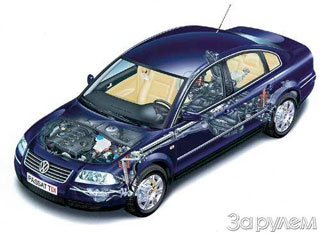 the cars here did not become more acute, increased torque allows you to use the gearbox much less often, even with strongly stretched gear rates.
the cars here did not become more acute, increased torque allows you to use the gearbox much less often, even with strongly stretched gear rates. Which one to prefer?
The new Volkswagen Passat has changed not only externally and internally. Having summarized the experience of previous generations, he seemed to add in the age of a dozen and a half (by human standards) years, becoming wiser, more solid, more significant. It is not for nothing that the study of the people's market shows that the owners of the passators are mostly family people, stably and well -earning, aged 40 to 55. Naturally, they most appreciate convenience and effort in everything. If you look at the car from their position, there is almost nothing to complain about. Well, for those who still try to find at least some highlight in the Passat, you should pay attention to a complete set with a 1.9 TDI engine or to the most charged gasoline version of the V6 4Motion.
Text / Sergey Voskresensky
Photo / author, company Volkswagen
Source: The magazine "Driving"

.jpg)
.jpg)
.jpg)
.jpg)
.jpg)